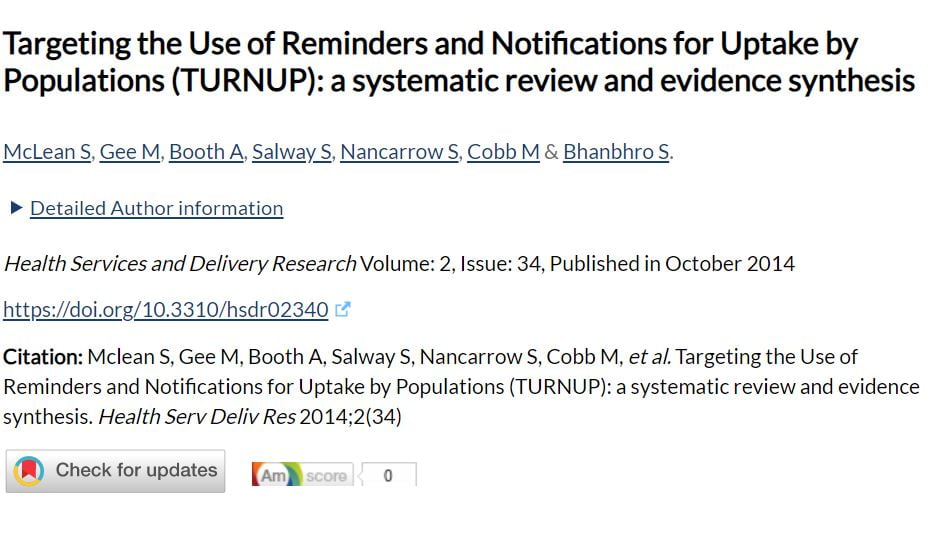Converting your research paper or thesis into a blog post is a way to synthesise and present key messages from your research directly to your target audience.
Blogs are typically short (much shorter than an academic paper), written in plain English language, and made freely available on a publicly available website.
If you are providing specialised content, you may put it behind a paid firewall for people to pay to access it, particularly if you have developed a specialised series of outputs.
We have developed a simple, five step process called the PAPAS approach (Problem, Audience, Pain, Approach, Solution) to help you distill a complex research output, paper, or report into a blog post. We provide a worked example of this approach in a blog linked to this article.
Why blog your research paper?
1. To directly communicate your key research messages to those most likely to benefit
You may have paid to publish your article in an open access journal, or it might only be accessible to journal subscribers. Either way, who actually reads your academic outputs, and how accessible is the information?
Let’s face it. Most academic publications reach a limited audience, both in terms of the way they are distributed and because of the academic style in which they are written.
Blogging your research paper lets you reframe your message in a way that will reach your end users (i.e., the general public), using a structure and language that is most appropriate to their needs.
At the same time, the world of social media is full of pseudo-experts peddling a great deal of misinformation. You have the opportunity to communicate your evidence-based expertise directly to the end users to counter the growing body of pseudo-babble.
2. To increase exposure to your research & your impact and engagement
Publishing a paper in a peer reviewed journal gives it credibility, but it does not, on its own, create impact.
Writing in a way that can be easily accessed and digested by your audience will let them understand and perhaps apply your key messages.
In addition, a blog creates the opportunity for a more conversational interaction with your audience than an academic publication.
By using techniques such as good keyword identification, it is more likely to rank more highly in search engines, increasing the visibility and uptake of your blog post.
For more information check out our expanded article on blogging and search engine optimisation.
3. To clarify your messages into a succinct output and frame your work for a mainstream audience
Blogging will give you a new and different appreciation of the way you write your academic papers, including the title you use, the way you present your narrative and engage with your audience.
By converting your research paper to a blog, you will learn the skills that are needed for search engine optimisation (SEO) – skills that, if applied to your academic outputs, are likely to have a positive flow-on effect.
4. To curate your expertise or personal brand in the public domain
You may have multiple areas of expertise – perhaps content expertise across a range of subject areas or themes, methodological expertise, even expertise in governance or leadership (see our article creating your academic brand).
By curating your research outputs into blogs to reflect your thematic strengths, you start to fortify your personal brand and academic identity.
5. Give old content a new lease of life
Blogging is a great way to go through some of your older research papers and find some gems that may have been undervalued or underpromoted, or perhaps it is a topic that has done the cycle, and has come back into fashion. Instead of having to repeat old experiments, you can bring an experienced set of eyes to what might seem to be a new topic.
For instance, I started my PhD in the late 90s on clinical health outcome measures and how to use those as a way to allocate health resources.
It was a popular neo-liberal tool, which failed in the late 90s, because of the way it was understood and applied then. The failure of the model meant that not much was published (despite many millions of dollars being pumped into projects). Guess what – the approach is back in fashion, in a slightly different way, but I see the same errors being repeated. Now would be an ideal time to pull out the key messages from my PhD and blog them to a health service manager / policy maker audience.
6. Salami slice your research outputs into multiple blog posts

Unlike mainstream academic publishing in journals, where salami slicing your research into multiple, thin outputs is frowned upon, blogging is salami heaven!
Every paper or research output holds the potential for multiple blog posts. In fact, you need to try to focus on just a single message in each blog post. For the first time in your life – salami away!
You can link multiple research related blog posts into a coherent theme if you want to – and Google is more likely to love you for it.
Before you start
First, there are a few key considerations:
Publish your research paper before you blog it

Ideally, you will have published your key research outputs in a journal before blogging about it. Like any form of public dissemination of your research findings, if you release it before publication, you potentially jeopardise the peer-reviewed publication (many journals will not publish material that has previously been published).
Also, if your research has not been through the rigor of the peer-review process, then it risks being discredited, as we have seen with many of the early-released findings during COVID-19.
However, there are likely to be secondary outputs (discussed in more detail below) that you would not otherwise publish and do not give away your ‘secret sauce’, but still increase the dissemination of meaningful aspects of your work.
Distill and amplify one key message
A blog is not the place to regurgitate your whole paper. It is a place to distill some of the key messages for a defined audience and amplify those messages. You won’t be able to provide much detail of your methodology, so it is important that you can present enough information to create a convincing story and, ideally, provide a link to the original journal article or source.
So how do you convert your research paper to a blog post
There are five things you need to be able to distill the messages from a research paper into a blog post. We’ve devised the PAPAS approach to help guide you:
- P: A Problem to solve or Purpose
- A: An Audience (or audiences) to solve it for
- P: An identified Pain that you can resolve for your audience
- A: A credible Approach to solving it (methodology)
- S: A Solution to the problem for that audience
And of course a great title to conveys the points above.
1. The Problem or Purpose
The problem or purpose is the single focus of your blog post and it is the single issue or story you are going to tell your audience. This needs to be concise. See if you can frame your problem as I am solving [–problem–] for [–audience–] by doing [–what research or approach–]. Your problem or purpose is likely to be much narrower than the title of your paper or your thesis / report. It is a good idea to link this as close to practice as possible and start with a brief example or story if you can.
As we said above, you may have multiple purposes or outputs. Make a list of all of the possible outputs you could have from your paper, and focus on one to start.
2. The Audience
The audience is the group of people you are solving the problem for – and the people you are targeting with your blog post.
Likely audiences include end users (eg other researchers, patients, students, people with disabilities, carers, prospective students, environmental activists to name a few). Be as specific as possible in identifying your audience because it will help you focus your message and the way you frame it.
For example, if you are blogging about a methodological problem to a largely academic audience, your style of writing and language will be quite different to an audience of older laypeople. It can be helpful to develop a brief avatar of your audience to consider who they are, what their interests are, and where you might find them. If you are blogging in a field related to your research and interests, you probably have a good idea of this already, as well as the right connections and networks to reach this group.
3. The Pain You are Helping Resolve
Identify the Pain you can resolve for your audience. Pain might be a strong word, but it is useful to think in this way, because it really helps you to pitch your message in a way that will add value to your audience. For example, in my research, which is largely applied health services research (i.e., I help make services more efficient and effective) my audience is managers and clinicians. The pains are likely to be related to service efficiency (finances or resources such as staffing not being used effectively) and human resources. I have also written some work on building research capacity for allied health professions, whose pain is the challenge of accessing and navigating research career pathways.
4. The Approach
The Approach in this context is what you have done to address the pain as described for this blog post. This is most likely to be the method, but it will depend on the focus of your blog post. For instance, if you have completed a survey of a population, then that was your approach. In my example below, we completed a very big (and complex) systematic literature review, and this was our approach.
5. The Solution
The Solution is the answer you have found to address the pain (or problem) for your audience. This is best illustrated in the example below.
Choosing your title
The Title is very important because ideally, you need to draw on the headings above to show what pain you are solving for whom. A good place to start with the title would be the points you identified in your problem statement, that is, I am solving [problem] for [audience] by doing [what research or approach].
Now, the secret of a good blog is in the title. Problogger provides some useful ways to help you come up with your title. Jeff Bullas also identifies some useful ways of creating great, clickable titles. Basically, keep it short, keep it punchy and relevant and don’t use symbols that will mess up your SEO.
You’ll see in the example below, that my paper lends itself perfectly to a ‘listicle’ (10 ways to… ), which is a well known formula for enticing readers to your blog.
Example of a research report converted to a blog post
I am going to use an example of an old piece of research that I was involved with that was designed to solve a relatively straightforward problem. As with much academic research, we used a very complex methodology, and came up with some fairly complex solutions, distilled neatly into … a 216 page report. It is extremely applied research which, if packaged in the right way, could have made a huge difference. Instead, we did the academic thing, and left it largely languishing in academic outputs.
The project was designed to look at which patient appointment reminder systems work best for which groups of patients. The project arose from a real-life problem. I was staying in Scotland with my elderly (late) father-in-law, who received a letter from his NHS podiatrist informing him that he had missed his appointment. The letter told him that they had tried to text him a reminder, but he had not responded.
This was 2010, before the days of smart phones. My father in law did not know how to text, and because he was alone at home, he easily lost track of time. That raised the question of does one size fit all or should reminder systems be tailored according to the population they serve?
Our team received funding from the National Institute of Health Research in England for a project called TURNUP: Targeting the Use of Reminders & Notifications for Uptake by Populations (never waste the opportunity to develop a good acronym). One of our team members, Professor Andrew Booth, is an expert in systematic reviewing methodologies, and at the time we were interested in using an approach called realistic evaluation – or realist synthesis, which is the same principles applied to literature reviewing which lets us look at “what works, for whom, and in what circumstances?”.

As a research team we were so embedded in the research process, that it was difficult to put our heads up and ask how to best repackage this to have value to a clinical audience, even though a number of team members were clinicians, and we also included an active service manager. The output of the project included a practice development tool.
Looking back at the report now, published in 2014, I am struck by how complex it was. There were a lot of messages – how on earth can I distill one or two key messages? The size of the report is also somewhat overwhelming – how do I do justice to the 216 page document? In many ways, it is probably similar to a PhD thesis in terms of length and complexity.
So given that this is a highly applied piece of research, it seems like an ideal example to illustrate the PAPAS model – or “how to convert your research paper into a blog post”.
There were a number of different questions we could have asked from this paper:
For example, in the report below, it is possible to spend time talking about the results of the actual project, the methodology (which was novel and complex at the time), the theoretical framework or frameworks (there was more than one), the processes of consumer engagement, given that this was an applied research paper. Some of the possible outputs (titles) from the same report problems could have included:
- The pros and cons of realist synthesis reviews in health services research (audience: health services researchers)
- How to engage end users in health services research (audience: health services researchers)
- Why don’t people attend outpatient health care appointments – what the research tells us (audience: health service managers)
- How to project manage a complex systematic review with a remote research team (I had moved to Australia by the time we received the funding, it was before the days of zoom and I only had ADSL internet) (audience: any researcher)
We could also have converted any of the outputs above into peer-reviewed publications, but we didn’t, because we had all moved onto the next project by the time our report was returned from the peer reviewers. Some tightly scripted blog posts to the right audiences would still have got the messages out and promoted the report.
Check out our sample blog based on the above report.
Key points
You will notice that this sample blog post is very short compared to the original 216 page report. It also uses multiple subheadings, short words, numbered lists and no references – although there is a link to the full report.
For more information on how to format your research paper for a blog post and optimise it for SEO, read our paper on Blogging For Academics: 8 Must-Know Strategies to Rank High in Search Results and Reach a Huge Audience. If you need to set up a website, see Setting Up Your Academic Website: 7 Things You Need To Know about how to get started. If you already have a website, be sure to keep it secure and protect against hackers.
If you have any questions, feel free to contact us for more information.

